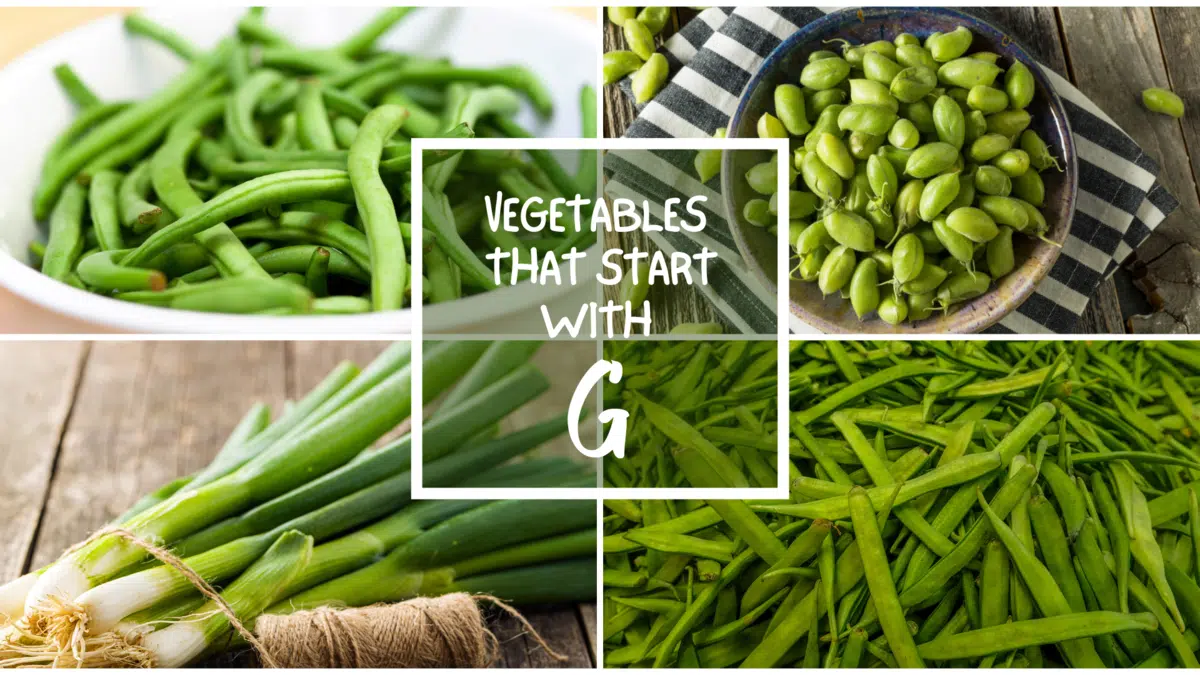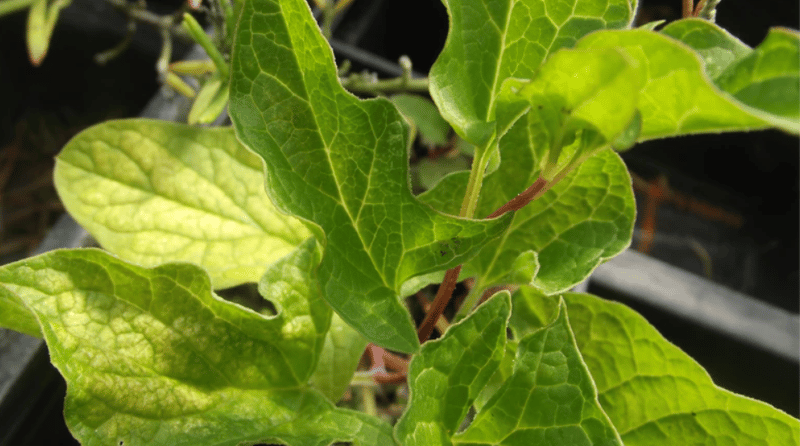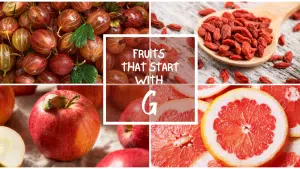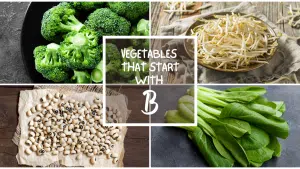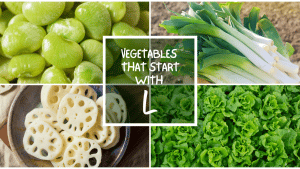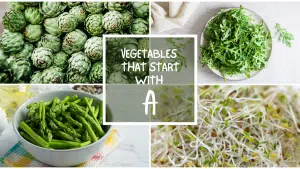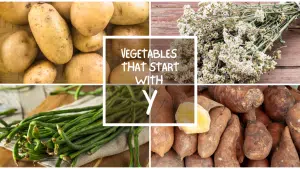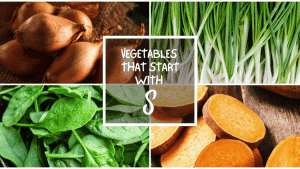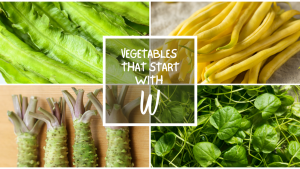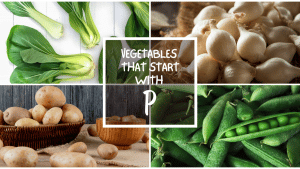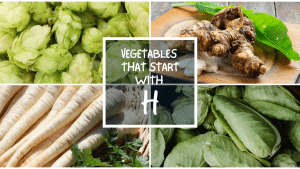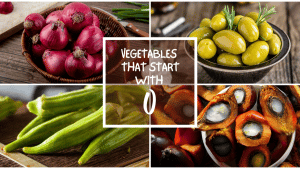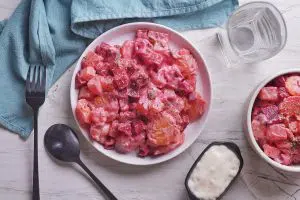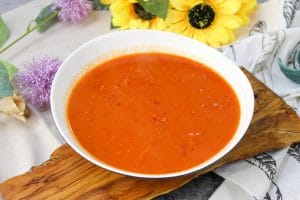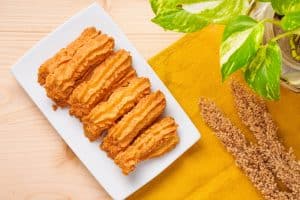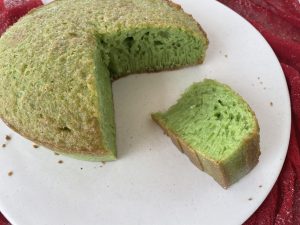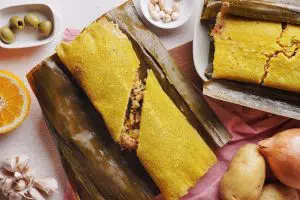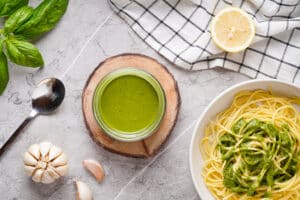All The Vegetables That Start With G
Important Note: When you buy through our links, we may earn a commission. As an Amazon Associate we earn from qualifying purchases. Content, pricing, offers and availability are subject to change at any time - more info.
There are various types of vegetables, and they are often classified based on their edible parts that are used for culinary purposes. Colorful and nutritious, vegetables are one of the healthiest foods you can eat. Vegetables can be classified in many ways. Here are all the vegetables that start with G.
- Garbanzo Beans
- Garlic
- Ginger
- Green Beans
- Good King Henry
- Green Onions
- Guar
- Galangal
- Greater Plantain
- Garden Rocket
- The Final Letter
Garbanzo Beans
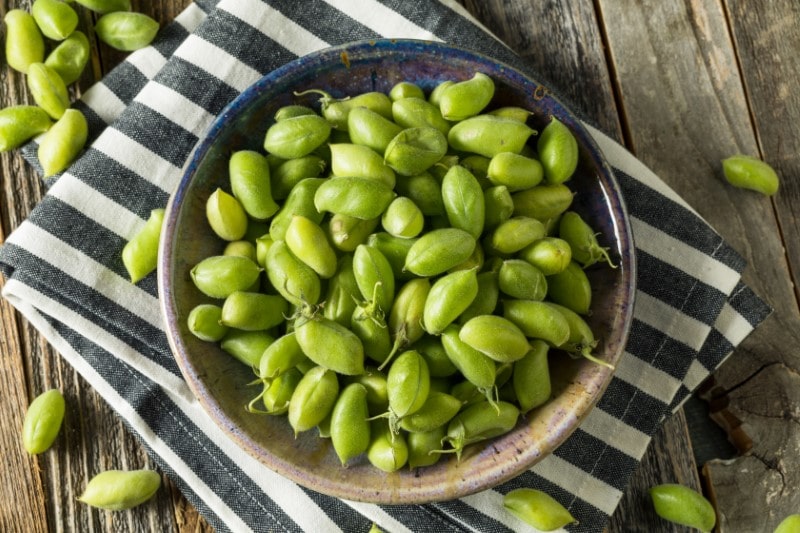
Garbanzo bean is an annual legume and a member of the Fabaceae family. The scientific name for garbanzo beans is Cicer arietinum, while it also has several names according to different regions, such as gram, Bengal gram, Egyptian pea, or chickpea. Garbanzo beans are believed to be among the first legumes to be cultivated by man. Archaeologists have recently discovered its remains that can be dated to almost 9500 years ago in the middle east. Garbanzo beans are believed to have originated from Turkey and France before speeding to other parts of the world. Garbanzo beans are cultivated in more than 50 countries worldwide. Currently, India is the world’s leading producer of garbanzo beans, with Turkey, Pakistan, and Myanmar also producing a significant amount.
The garbanzo bean plant can grow to a height of between 20 to 50 centimeters, with leaves growing on each side of the stem. The leaves are usually small and appear feathery. Garbanzo beans are categorized as pulse legumes, which are legumes that are used after they have dried up. The beans typically grow in a pod, with each pod containing about two or three beans. The garbanzo bean flowers are predominantly white with pink, blue, or violet veins. There are wide varieties of garbanzo beans, but the most common are the larger round, light-colored Kabuli-type, common in the United States, and the smaller, dark, irregularly shaped Desi-type often used in India and the Middle East. However, the Kermanshah is considered to be of the highest quality.
Garbanzo beans have to be cooked for them to be edible. There are many ways to prepare garbanzo beans, but first, you have to boil them to soften the beans. Usually, they tend to take at least 10 minutes, but dried garbanzo beans take much longer to cook. To reduce the time needed to boil the beans, you can soak them. Garbanzo beans can also be ground into flour used to make falafel. In South Asia, garbanzo flour is known as gram flour or besan and is very popular in most of their cuisine.
Garbanzo beans are a rich source of vitamins, minerals, and fiber, with various health benefits. The fiber and protein help lower your calorie intake. Garbanzo Beans have a low glycemic index, thus helping manage your blood sugar levels. Minerals such as magnesium and potassium can be found in the beans, thus assisting the body in preventing high blood pressure. The presence of vitamin B in the beans lowers the risk of you getting cancer. Some other health benefits of garbanzo beans include the prevention of iron deficiency, the promotion of brain health, and the prevention of diabetes.
Garlic

Garlic is a bulbous flowing plant of the allium genus and is widely known by scientists as Allium sativum. The garlic plant is native to Central Asia and northeastern Iran regions but is currently cultivated in almost every part of the world. Some of the close relatives of garlic include onion, leek, chive, and shallot. The garlic plant has a flowering stem that can grow up to a meter tall. The garlic plant leaves are usually broad, flat linear, and with an acute apex. The plant also produces hermaphrodite flowers that are either pink or purple. The garlic bulb is odoriferous and contains an outer layer of thin sheathing leaves that enclose the cloves. Mature garlic contains about 10 to 20 cloves that are primarily asymmetric, except for those close to the center.
Garlic happens to have a sharp, hot taste with a very strong smell resulting from the phytochemicals. Whenever the plant cells are damaged, the enzymes in the cell vacuoles trigger the breakdown of the sulphur compounds in the cell resulting in the smell. Some of these compounds continue to react over time since they are unstable. Garlic also happens to be more potent than onions, leeks, and shallots because of the high concentration levels of the phytochemicals.
Garlic is an essential seasoning ingredient when cooking and can also be used as a condiment. In some regions, the leaves and the garlic flowers are eaten but are mostly consumed when they are still tender and immature. In Korea, the garlic head is heated for several weeks, creating a product known as black garlic, which is sweet and syrupy; it is then packed and exported. Garlic is also a key ingredient in the baking industry, especially in making garlic bread, toast, crostini, canapé, and bruschetta. The intensity of the garlic flavor varies depending on the cooking method. Sometimes garlic is dehydrated and then crushed to produce garlic powder which acts as a fresh garlic substitute, though the taste won’t be the same. The powder can also be mixed with table salt to crate garlic salt.
Researchers have proved that garlic contains numerous health and nutritional benefits such as protection against the common cold, reducing blood pressure, improving the cholesterol levels in the body, thus preventing heart-related diseases, detoxification of heavy metals from the body, and the antioxidants help prevent Alzheimer’s and dementia. Some of the nutrition content present in garlic include vitamin B6, C, selenium, manganese, and fiber. Garlic is present in all grocery stores in the United States.
Ginger

Ginger is an herbaceous perennial flowering plant mainly grown for its tubers. The scientific name for ginger is Zingiber officinale, and it belongs to the Zingiberaceae family. It is believed that ginger originated from Southeast Asia before spreading to other parts of the world. The flowers produced by the ginger plant are always clustered and are pink and wither when young, but when mature, they turn yellow. The ginger plant has leafy stems that can grow to about a meter. Ginger is cultivated in almost every country, but India, Nigeria, Nepal, and China are recognized as the leading producers.
Ginger is mainly used as a spice though it can also be used as a traditional health remedy. Ginger can be used to make foodstuffs like candy, vegetables, pickles, soda, and some alcoholic beverages. Young ginger rhizomes are fleshy and juicy with a mild taste; hence they are primarily pickled in either vinegar or sherry as a snack or cooking ingredient. Ginger can be steeped in boiling water to make herbal tea. In some areas, ginger is dried and then ground to a powder used in the making of cookies, crackers, cakes, gingerbread, ginger beer, and ginger ale. Some individuals prefer eating ginger raw, believing it is fast-acting and more potent.
Ginger has various health benefits, such as soothing sore body parts and muscles and calming nausea, especially in pregnant women. Also, it helps in improving oral hygiene, slowing down the growth of cancer cells, lowering blood sugar and cholesterol, protecting against diseases, and relieving indigestion. Ginger can be found in most stores across the United States though if you require it in powder form or any other form other than its natural state, you’ll have to look a bit harder.
Green Beans
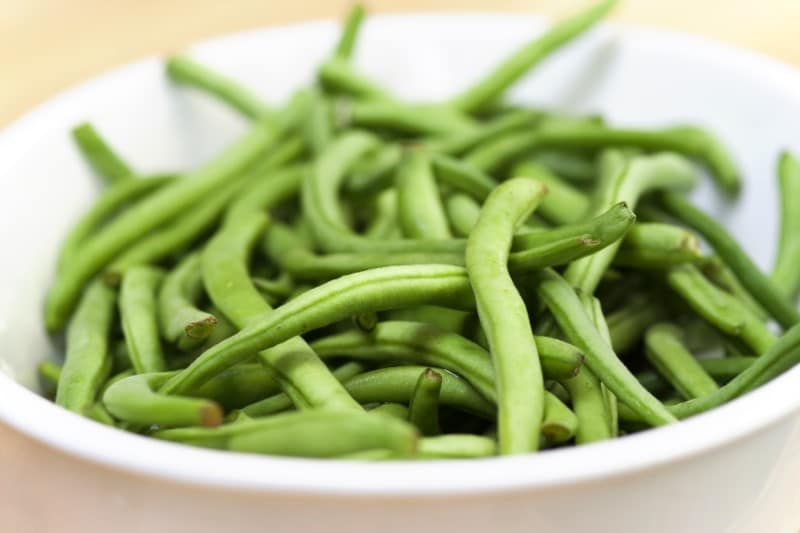
Green beans are young unripe fruits of the common bean (Phaseolus vulgaris) harvested to be consumed as a vegetable. In different regions of the world, green beans are referred to by various names such as French beans, snap beans or simply snaps, or string beans. In the Philippines, green beans are referred to as habichuelas or Baguio beans. Green beans are native to the Americas. However, they grow worldwide all year-round, meaning you’ll find them in grocery stores no matter what season it is. Their high season is usually between May and October. The distinguishing feature from other kinds of beans is that green beans are harvested and primarily consumed while still green and in their pods.
Green beans can be prepared either by steaming, baking, boiling, or stir-fried and are mostly cooked in dishes like casseroles, soups, and stews. In the United States, green bean is a popular dish during thanksgiving as green casserole, while some restaurants serve green beans fried and battered as green bean tempura. In most countries, green beans are sold canned, frozen, or fresh. In so mara, green beans are dried or fried with vegetables such as corn, carrots, and peas as vegetable chips.
Green beans are rich in proteins, folate, magnesium, vitamin B, potassium, iron, fiber, and antioxidants, including vitamin C, quercetin, kaempferol, and flavonols. These nutrition contents of the green bean have various health benefits, such as lowering the risk of cancer and lowering cholesterol levels. Due to their low glycemic index, common beans are regarded as diabetes-friendly. The antioxidants fight free radicals in the body, which helps to lower your risk of some health problems and reduce cell damage.
Good King Henry
Good king henry is scientifically referred to as Blitum bonus-Henricus other names include English mercury, perennial goosefoot, Mercury goosefoot, Markery, or Lincolnshire spinach. Good henry is a species of goosefoot and is native to the regions of southern and central Europe. For a long time, good king henry was a vegetable in cottage gardens, but recently, people don’t cultivate it, with some viewing it as a weed.
Good king henry can be eaten raw or cooked. Soon after harvesting, the good king henry leaves should be used since they tend to wilt very quickly. The peak season for good king henry is usually during the spring or early summer. The older leaves are mostly tough and bitter, while the younger leaves can be chopped up and used as a small part of mixed salads. Though small and fiddly, the seeds can be harvested and then ground to be used to make bread after it has been mixed with flour. However, you must soak the seeds overnight and rinse them thoroughly before grinding them to remove the saponins. The flower buds of good king henry are edible after cooking them and are considered to be gourmet food. Remember, raw king henry leaves should be consumed in moderation due to their toxins.
Green Onions
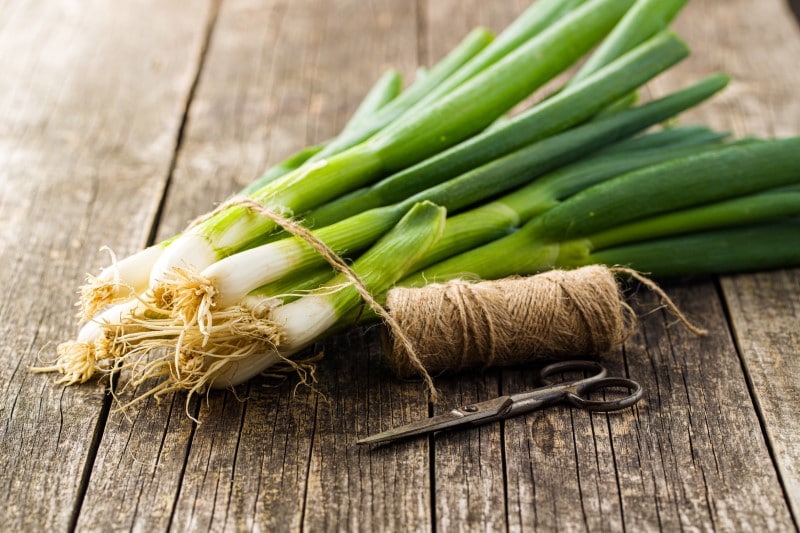
Green onions are vegetables from various species of the genus allium. Green onions are mostly referred to as scallions and are related to garlic, leek, chive, and shallot. Unlike most members of the allium genus, green onions lack a fully developed bulb; instead, they have long hollow tubular green leaves growing from the bulb. These leaves are used as a vegetable.
There are three varieties of green onions: chives, spring onions, and basic green onions. Green onions can be eaten either cooked or raw, and they are often chopped into other dishes. Green onions can also be used as a garnish on other dishes. In Japan, green onions (wakegi) are mainly used as a topping for Japanese cuisines, such as tofu. In Nepal, green onion is used in meat item fillings like momo (dumpling) and choyla, which is meat intertwined with spices and green onions. In China, scallion is mainly used with garlic and ginger to cook a wide variety of meat and vegetables. The white part of the scallion is usually fried with other ingredients, while the green part is usually chopped to decorate the finished food. During the Passover meal (Seder), Persian Jews strike each other with scallions before singing “Dayenu,” re-enacting the whipping endured by the Israelites enslaved by the ancient Egyptians.
Green onions contain various nutritious contents such as vitamin C and antioxidants like quercetin and flavonoids. The health benefits of green onions include reducing inflammation, lowering cholesterol, helping in maintaining the blood sugar levels in the body, boosting the body’s immunity, cancer prevention, and cleaning the intestines.
Guar
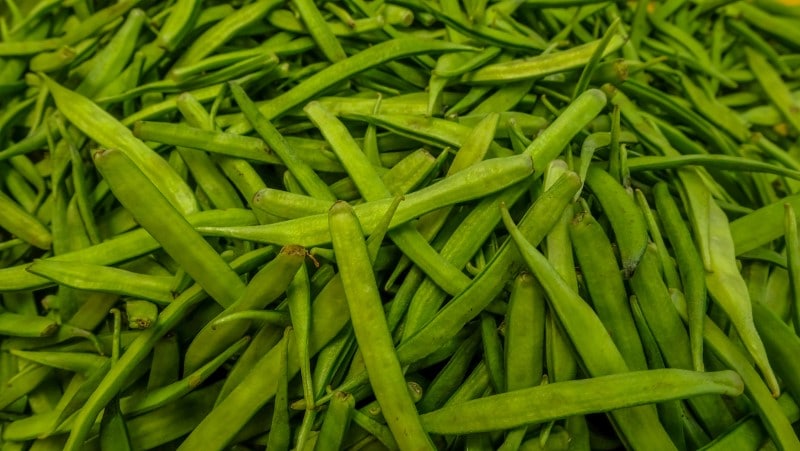
Guar is an annual legume and the primary source of guar gum. Guar is scientifically known as Cyamopsis tetragonoloba, and in other regions, it is known as Gavar, guvar bean, and gawar. Guar’s origin is unknown since it hasn’t been found in the wild but is believed to have developed from the African species of Cyamopsis senegalensis. Guar has been cultivated in parts of South Asia for centuries, and it tends to prefer growing in semi-arid areas though it requires frequent rainfall.
Guar as a vegetable can act as a spinach substitute with the pods prepared like salad or vegetables. Guar also produces very nutritious beans, but the guar protein isn’t usable by human beings. Guar gum is also used as an additive in several foods and beverages as a fiber source. Guar flour is also used in baking as a dough improver. The health benefits of guar include reliving constipation, shortening the diarrhea episodes, reducing the amount of cholesterol in the body, reducing stomach pain, improving bowel function, and reducing blood pressure. Guar gum also has industrial applications such as ore floatation, as a fracking agent, manufacturing of explosives, and is used in the paper and textile industry.
Galangal
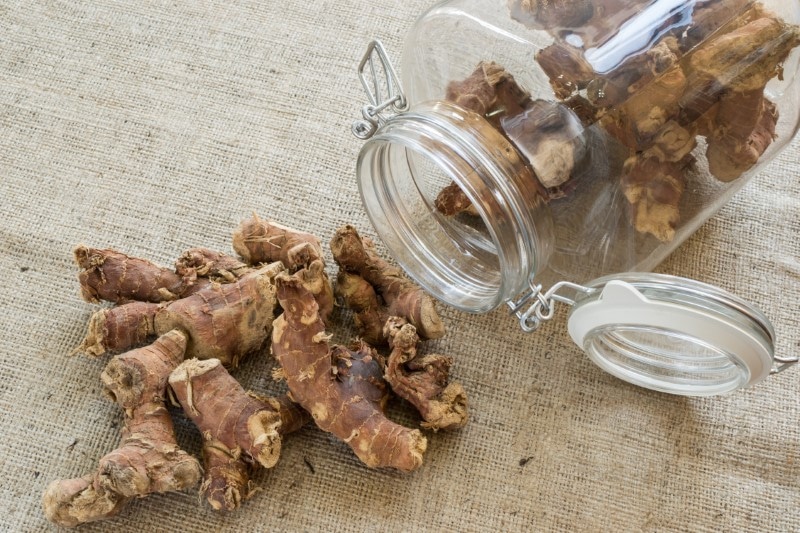
Galangal is a member of the ginger family known scientifically as Alpinia galanga. Galangal is native to Southeast Asia, where it is still cultivated and used as a cooking ingredient. Countries in the Middle East also produce galangal on a large scale. The plant grows from rhizomes in clumps of stiff stalks that can rise to 2 meters high. Galangal also bears fruits with the stem filled with abundant long leaves. Galangal has a pungent smell and a strong taste that almost resembles black pepper and pine needle. There are two major categories of galangal red cultivars that are mainly preferred for medicinal purposes and white cultivars for kitchen use.
Galangal can be eaten either raw or cooked. It is a major ingredient in Thai curries and soups such as tom kha kai which the galangal is used as chunks or sliced into thin pieces or mashed and then mixed into the curry paste. In Indonesia, galangal is used to prepare rendang, while in the Philippines, galangal is fermented with honey to make wine known as byais.
Galangal is rich in antioxidants which help protect the cells from the cell-damaging free radicals. Galangal also helps protect the body against certain cancers such as liver, bile, and skin. Other health benefits of galangal include protection against inflammation and pain, helping the body fight against infection, and boosting male fertility.
Greater Plantain

Greater plantain is a species of flowering plant in the plantain family Plantaginaceae; it is scientifically known as Plantago major. Greater plantain is an herbaceous perennial plant with a rosette of leaves. The flowers bore to the great plantain are usually small, brown-greenish with purple stamens. The seeds of great plantain are held on narrow and long spikes that rise above the foliage. A single greater plantain plant can produce up to 20000 seeds.
Greater plantain leaves are edible when young and tender since they tend to be tough and fibrous if they get older. The older leaves are usually preferred to cook in stews, while the younger ones are used as a green salad. The fibers from a mature plantain’s leaf are so tough that they can be used to make sutures, fishing lines, and braids. The vegetable contains phytochemicals like allantoin, aucubin, ursolic acid, flavonoids, and asperuloside. Therefore, it possesses benefits like preventing common colds, reducing eye irritation, preventing hemorrhoids, and fighting against bladder infection. Greater plantains can also be found in the United States.
Garden Rocket
Garden rocket is an annual edible plant that belongs to the Brassicaceae family and is preferred for its leaves. Garden rocket is known under different names depending on your region. In Britain, South Africa, Ireland, New Zealand, and Australia, it is known as eruca. Other names include rucola, rucoli, rugula, roquet, and colewort, but scientifically it is referred to as Eruca sativa. Garden rocket is native to the Mediterranean region, especially Morocco, Portugal, Syria, Lebanon, Egypt, Turkey, and Israel.
A Garden rocket is an annual plant capable of growing up to 100 centimeters high. The leaves of the garden rocket plant are usually pinnate and are deeply lobed. The flowers are arranged in a corymb with a diameter of 1 inch, and they are mostly creamy white with purple veins and yellow stamen. The garden rocket’s leaves are edible with a bitter, peppery, and tart flavor. It is primarily used in the preparation of salads and hence regarded by most as a salad vegetable.
In southern Italy, garden rocket is used to prepare the pasta dish cavatiéddi and is often added to a pizza at the end of or just after baking. Also, it is used as a salad with tomatoes and with either burrata, bocconcini, buffalo, or mozzarella cheese. In Rome, garden rocket is used in straccetti, a dish of thin slices of beef with raw rocket and Parmesan cheese. It is also cooked in Apulia. In Turkey, the rocket is eaten raw as a side dish or salad with fish but is additionally served with a sauce of extra virgin olive oil and lemon juice. In Slovenia, garden rocket is combined with boiled potatoes or used in soup. While in West Asia, Pakistan, and Northern India, garden rocket seeds are pressed to make taramira oil, used in pickling and as a salad or cooking oil after aging to remove acridity. The seed cake is also used as animal feed.
Garden rockets contain nutritional contents such as folate that helps support the production of DNA and other genetic material. Vitamin K is responsible for blood coagulation. Vitamin A supports immune function, cell growth, night vision, and overall eye health. It also works to help maintain kidney, lung, and heart function. Vitamin C helps support the immune system, tissue health, and iron absorption from food. Minerals like potassium found in garden rockets is an electrolyte vital for heart and nerve function and calcium, which helps the blood clot normally.
The Final Letter
The list above contains vegetables that begin with G, which are full of nutrients. So, this is the opportunity to learn at least one recipe containing at least one of the listed vegetables.
